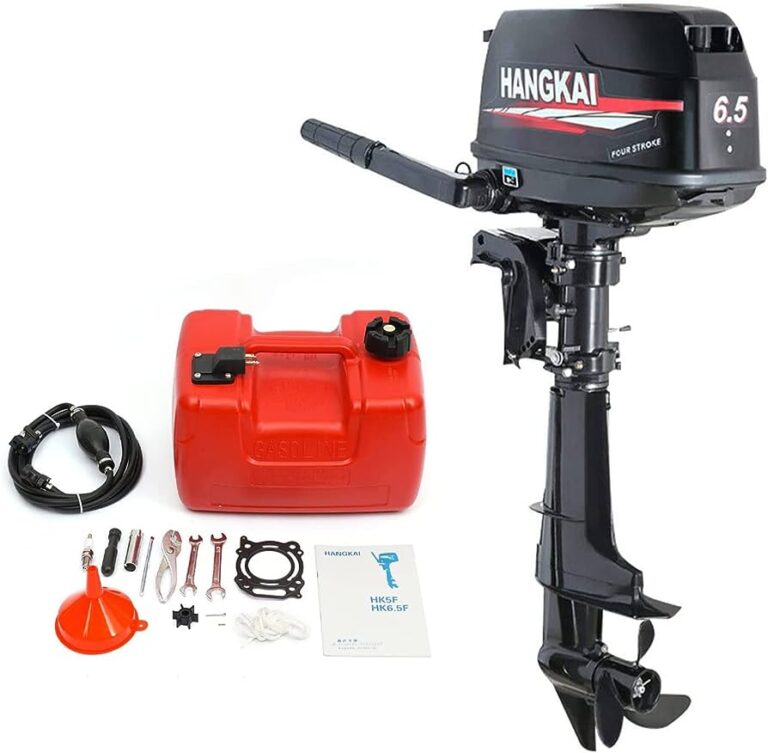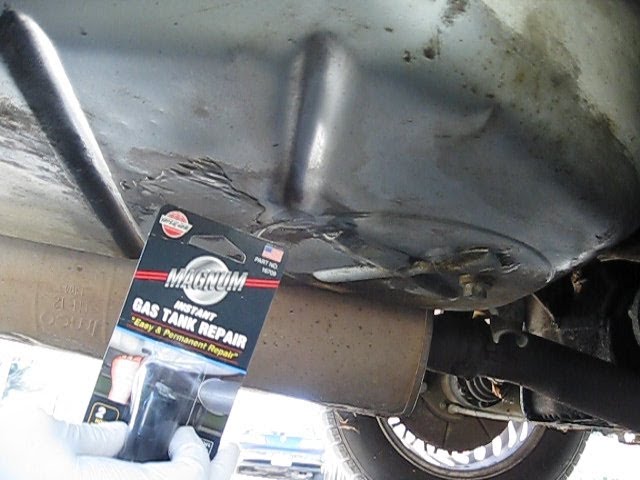Propeller Care: Ensuring Smooth Sailing
Ensure smooth sailing and optimize propeller efficiency by considering factors such as propeller diameter, RPM, number of blades, blade outline, angle of attack and camber, pitch/diameter ratio, stern tunnels, and Schneekluth ducts. These factors play a crucial role in enhancing the performance of your marine vessel’s propeller.
By choosing the right parts and maintaining them appropriately, you can enjoy a more efficient and enjoyable boating experience. Paying attention to propeller care and maintenance is essential to keep your vessel running smoothly and ensure optimal performance on the water.
Choosing The Right Propeller
Choosing the right propeller is crucial for ensuring a smooth sailing experience on the water. The efficiency and performance of your marine vessel depend on selecting the appropriate propeller to keep it moving forward effortlessly.
When it comes to ensuring smooth sailing on your marine vessel, choosing the right propeller is crucial. The propeller plays a significant role in determining your boat’s performance and overall efficiency. Whether you’re a recreational boater or a professional sailor, selecting the most suitable propeller for your boat is essential for a satisfying boating experience.
Here are some factors to consider when selecting a propeller:
Factors To Consider When Selecting A Propeller:
- Boat Specifications: Take into account your boat’s specifications, such as its length, weight, and engine type. These factors can influence the size, pitch, and material of the propeller that will work best for your boat.
- Intended Use: Consider how you plan to use your boat. Are you looking for top speed, better fuel efficiency, or smoother handling? The propeller design can be tailored to meet specific requirements, so understanding your intended use is key.
- Engine RPM Range: Ensure that the propeller you choose operates within your boat’s ideal engine RPM range. Proper RPM matching is crucial for optimal performance and longevity of your boat’s engine.
Matching The Propeller To Your Boat’S Specifications And Intended Use:
- Boat Length and Weight: Longer and heavier boats typically require larger propellers to efficiently propel the vessel through the water.
- Engine Type: Different engines have different power outputs and torque curves. Matching the propeller to your specific engine type ensures optimal performance.
- Pitch: The propeller pitch determines the distance the boat will travel in one revolution. Higher pitch propellers provide higher top speed, while lower pitch propellers offer better acceleration and pulling power.
- Material: Propellers can be made of aluminum, stainless steel, or composite materials. Each material has its own advantages and disadvantages in terms of durability, performance, and cost.
Propeller Design Options And Their Impact On Performance:
- Number of Blades: The number of blades on a propeller can affect its performance. Three-blade propellers are commonly used for a balance of speed and efficiency, while four-blade propellers offer improved acceleration and handling.
- Cupping: Propellers with cupped blades create more bite and can increase overall boat performance, especially in rough waters.
- Diameter: The diameter of the propeller affects its overall efficiency and clearance between the blades and the hull. Choosing the right diameter ensures optimal performance without causing any drag.
- Rake: The rake angle refers to the angle at which the blades are tilted backward. More rake can provide better lift and stability at higher speeds.
Remember, choosing the right propeller requires careful consideration of your boat’s specifications, intended use, and propeller design options. Taking the time to research and consult with experts can help you make an informed decision and enhance your boating experience. So, weigh all the factors and set sail with the perfect propeller for your vessel.
Propeller Maintenance And Inspection
Ensure smooth sailing with proper propeller maintenance and inspection. Maintaining your propeller is crucial for optimal performance and longevity of your marine vessel. Keep your boat in top shape by regularly checking and caring for your propeller.
Importance Of Regular Propeller Maintenance:
- Regular propeller maintenance is crucial for ensuring the smooth operation and performance of your marine vessel.
- Neglecting propeller maintenance can lead to a decrease in efficiency, decreased fuel economy, and potential damage to other parts of the boat.
- By regularly maintaining your propeller, you can extend its lifespan and avoid costly repairs or replacements.
Steps For Inspecting And Cleaning The Propeller:
- Inspect the propeller visually for any signs of damage, such as dents, cracks, or worn-out blades.
- Remove any debris, fishing nets, or ropes that may be entangled in the propeller.
- Check the propeller shaft for any signs of wear or damage.
- Use a soft brush or sponge to clean the propeller blades, removing any algae or barnacles.
- Inspect the propeller hub for any signs of corrosion or damage.
Identifying And Addressing Common Propeller Issues:
- Cavitation: If you notice pitting or erosion on the propeller blades, it may indicate cavitation. Address this issue by adjusting the boat’s trim or replacing the propeller with a design better suited to your vessel.
- Propeller imbalance: Vibrations or unusual noises can be a symptom of propeller imbalance. Have a professional technician balance the propeller to ensure smooth operation.
- Propeller damage: If you spot any significant damage to the propeller, such as bent blades or missing pieces, it’s essential to have it repaired or replaced promptly.
- Corrosion: Regularly inspect the propeller for any signs of corrosion. Apply an anti-corrosion coating if necessary.
- Propeller pitch: Check if the propeller pitch is suitable for your boat’s engine and usage. If it’s not optimized, consider consulting a professional for advice and potential adjustments.
Maintaining your propeller is key to smooth sailing and optimal performance. Regular inspections and cleaning, along with addressing any common propeller issues, will keep your marine vessel operating at its best. Remember, a well-maintained propeller not only improves fuel efficiency and performance but also extends the lifespan of your valuable equipment.
So, don’t overlook propeller care, and enjoy a trouble-free boating experience.
Improving Propeller Efficiency
To ensure smooth sailing, improving propeller efficiency is crucial. Factors such as propeller diameter, RPM, number of blades, blade outline, angle of attack and camber, pitch/diameter ratio, stern tunnels, and Schneekluth ducts play a significant role in enhancing propeller performance.
Achieve optimal propulsion by considering these elements.
Tips For Maximizing Propeller Efficiency:
- Regularly clean the propeller blades to remove any buildup of marine growth, which can hinder performance.
- Check for any damage or wear on the propeller blades and repair or replace as necessary.
- Ensure that the propeller is properly aligned with the engine shaft to minimize drag and improve efficiency.
- Keep the propeller well-balanced to prevent vibrations that can reduce efficiency.
- Reduce unnecessary weight on the boat to decrease the load on the propeller and improve efficiency.
- Use the correct propeller size for your boat and engine to ensure optimal performance.
- Regularly check and replace worn or damaged propeller parts, such as the hub or bearings.
- Avoid excessive throttle and use the appropriate RPM range for efficient propulsion.
- Trim the boat properly to reduce hull resistance and enhance propeller efficiency.
- Monitor fuel consumption to identify any changes that could indicate propeller inefficiency.
Adjusting Propeller Pitch And Diameter For Optimal Performance:
To improve propeller efficiency, it’s essential to adjust the pitch and diameter for optimal performance. Here’s how:
- Increase the pitch to achieve better fuel efficiency and increased top speed. It allows the propeller to cover more distance with each revolution.
- Decrease the pitch to enhance acceleration and maneuverability. It applies more power to the water, resulting in quicker response and better handling.
- Consider adjusting the diameter if you require more power or want to reduce strain on the engine. A larger diameter propeller can deliver more power, while a smaller diameter propeller reduces strain on the engine.
- Consult your boat’s manufacturer or a professional propeller technician for guidance on adjusting the propeller pitch and diameter to match your specific vessel and usage requirements.
Upgrading To A More Efficient Propeller Design:
If you’re looking to maximize propeller efficiency, upgrading to a more efficient propeller design can make a significant difference. Consider the following options:
- Switching to a propeller with a higher number of blades can improve efficiency by increasing the propeller’s thrust and reducing cavitation.
- Opting for a propeller with a different blade shape, such as skew or twisted blades, can enhance performance by reducing drag and improving thrust.
- Investing in a stainless steel or composite propeller can offer better durability and performance compared to traditional aluminum propellers.
- Consider a variable pitch propeller that allows you to adjust the pitch while underway, optimizing performance for different boating conditions.
- Consult with a propeller specialist to determine the best propeller design for your specific vessel, engine, and boating needs.
By following these tips for maximizing propeller efficiency, adjusting the propeller pitch and diameter, and considering an upgrade to a more efficient propeller design, you can ensure smooth sailing and enhance your boating experience.

Credit: www.volvopenta.com
Extended Tips For Propeller Care
Ensure smooth sailing with these extended tips for propeller care. Maintain propeller efficiency by considering factors such as propeller diameter, RPM, number of blades, and blade outline. Regular maintenance, including inspection, lubrication, and overhaul, is key to keeping your marine vessel performing at its best.
Choosing the right parts for your marine vessel is crucial for ensuring a smooth and enjoyable boating experience. One component that requires special attention is the propeller. Proper propeller care is essential for maintaining optimal performance and preventing any issues that may arise.
In this section, we will discuss some extended tips for propeller care to help you keep your vessel sailing smoothly.
Understanding The Impact Of Propeller Fouling And How To Prevent It:
- Regularly inspect the propeller for any signs of fouling, such as marine growth, barnacles, or debris.
- Remove any fouling by gently scraping it off with a propeller cleaning tool or brush.
- Apply a biocide coating or antifouling paint to the propeller to discourage marine growth.
- Consider using a propeller zinc or aluminum anode to provide sacrificial protection against corrosion.
Navigating Shallow Waters And Protecting The Propeller:
- Be cautious when navigating shallow or unknown waters to avoid potential propeller damage from rocks, sandbars, or other submerged hazards.
- Install a propeller guard or skeg protector to shield the propeller from any impacts.
- Keep a lookout for any floating debris in the water that could potentially damage the propeller and navigate around it.
Proper Storage And Maintenance During Offseasons:
- Before storing your vessel for the offseason, thoroughly clean the propeller to remove any fouling or debris.
- Coating the propeller with a thin layer of grease or a protective spray can help prevent corrosion during storage.
- Store the vessel in a dry and secure location to keep the propeller safe from any potential damage.
Remember, proper propeller care is essential for maintaining the performance and longevity of your marine vessel. By understanding the impact of propeller fouling, protecting it while navigating shallow waters, and implementing proper storage and maintenance practices, you can ensure a smooth sailing experience every time you hit the water.
Frequently Asked Questions For Propeller Care: Ensuring Smooth Sailing
How Can I Improve My Propeller Efficiency?
To improve propeller efficiency, consider the following factors: propeller diameter, RPM, number of blades, blade outline, angle of attack and camber, pitch/diameter ratio, stern tunnels, and Schneekluth ducts.
How Do You Maintain A Propeller?
To maintain a propeller: 1. Clean the propeller regularly to remove any buildup or debris. 2. Inspect the propeller for damage or wear and replace any damaged parts. 3. Lubricate the propeller shaft and bearings to ensure smooth operation. 4. Check the propeller alignment to ensure it is properly positioned.
Remember to follow the manufacturer’s instructions and schedule regular maintenance to keep your propeller in optimal condition.
How Do You Maintain A Boat Propeller?
To maintain a boat propeller: 1. Inspect the propeller regularly for damage or wear. 2. Clean the propeller after each use to remove debris and fouling. 3. Ensure proper alignment and balance of the propeller. 4. Check and replace the propeller shaft seals as needed.
What Is The Best Way To Protect People In The Water Against Propeller?
To protect people in the water against propeller accidents, follow these steps: 1. Use propeller guards to create a physical barrier between swimmers and the propeller. 2. Implement safety protocols such as designated swimming areas and clear signage. 3. Educate boaters about the importance of watching out for swimmers and maintaining a safe distance.
4. Regularly inspect and maintain propellers to ensure they are in good working condition. By following these guidelines, you can help prevent propeller accidents and keep people in the water safe.
Conclusion
Taking care of your propeller is essential for smooth sailing and an enjoyable boating experience. By following a few simple maintenance tips, such as regular cleaning and inspection, lubrication, and addressing any damages or wear and tear, you can ensure that your propeller is functioning at its best.
Additionally, choosing the right propeller for your vessel and considering factors such as diameter, RPM, number of blades, and blade outline can significantly improve efficiency. Keeping up with propeller care not only maximizes performance but also prolongs the lifespan of your propeller, saving you time and money in the long run.
So, whether you’re a seasoned sailor or a boating enthusiast, prioritize propeller care and maintenance to keep your vessel sailing smoothly on the open waters.





